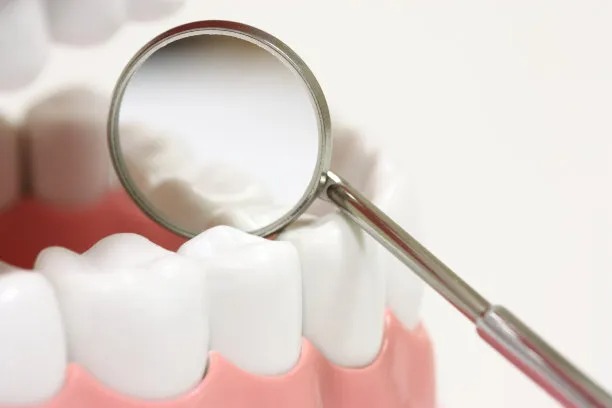Enhancing Smiles and Restoring Confidence Through Advanced Dental Implant Treatment Techniques and Innovations
Summary: Dental implant treatments have evolved significantly, leading to enhanced smiles and restored confidence for many individuals. This article explores advanced techniques and innovative technologies that shape the future of dental implants. We will discuss the essential aspects of treatment planning, materials used, technological innovations, and patient-centered approaches. Each facet plays a vital role in ensuring successful outcomes, ultimately providing patients with the comfort and confidence they desire. Through understanding these advancements, individuals can make informed decisions regarding their dental health, aiming for a beautiful smile that lasts a lifetime.
1. Importance of Precise Treatment Planning

Effective dental implant treatment begins with careful planning. Accurate assessments and diagnostics ensure that the treatment fits the individual’s unique dental needs. Dental professionals employ advanced imaging technologies such as 3D Cone Beam Computed Tomography (CBCT) to develop a clear, three-dimensional view of the patient’s oral anatomy.
This innovative imaging allows for enhanced precision in placing the implants. Additionally, a comprehensive examination enables the dentist to evaluate the quality and quantity of bone, ensuring that suitable sites for implantation are chosen. This stage is crucial, as poor planning can lead to complications and implant failure.
Furthermore, a tailored treatment plan accounts for the patient’s overall health, aesthetic preferences, and lifestyle, thus enhancing their experience and outcome. By prioritizing a thorough assessment, dental professionals can significantly increase the likelihood of successful implant placement.
2. Advancements in Implant Materials
The evolution of implant materials has drastically improved treatment outcomes. Traditional titanium implants have long been the standard, renowned for their strength and biocompatibility. Recent advancements have introduced zirconia implants, which offer a tooth-colored aesthetic ideal for patients concerned about appearance.
Zirconia implants are notable for their ability to integrate with bone while being aesthetically pleasing. They offer various benefits, including reduced bacterial adhesion and a lower risk of inflammation, which can lead to better long-term outcomes. Both titanium and zirconia implants are biocompatible, yet the choice of material depends on patient preferences and specific conditions.
Moreover, the development of innovative surface coatings on implants enhances osseointegration—the process where the implant fuses with the bone. These enhancements further boost success rates and overall patient satisfaction. Selecting the right material is pivotal in crafting a natural and functional smile.
3. Cutting-Edge Technological Innovations
Technological innovations in dental implants have revolutionized treatment processes. One such technique is computer-guided implant surgery, which utilizes advanced digital technology to map out precise implant placement. Surgeons can visualize the complete picture before ever making an incision, resulting in minimally invasive procedures.
This technology not only improves accuracy but also reduces recovery time for patients. Furthermore, the development of implant robots allows for even more precision in placement, reducing human error and elevating the standard of care. These innovations are helping to create less traumatic experiences for patients.
Additionally, the incorporation of augmented reality (AR) is becoming more prevalent in implant surgery. By overlaying digital images onto physical spaces, surgeons can enhance their visual understanding of the patients anatomy. This further enhances the planning and execution of the procedure and ensures the patients needs are met meticulously.
4. Emphasis on Patient-Centric Care
In modern dentistry, a patient-centric approach is crucial for successful implant outcomes. This perspective recognizes that each patient’s needs extend beyond technical requirements; emotional and psychological aspects are just as important. Open communication between the patient and dental professionals creates a more comfortable environment where patients feel informed and empowered.
Education plays a pivotal role here. Patients should be fully educated about the procedures involved in their dental implants, including benefits, risks, and aftercare. This transparency builds trust and helps mitigate anxiety, leading to a more positive overall experience.
Furthermore, providing personalized aftercare ensures that patients maintain their new smiles for years to come. Regular follow-ups and support foster an ongoing relationship between patients and dental care teams, markedly enhancing patient satisfaction and confidence in their restored smiles.
Summary: The advancements in dental implant treatment signify a remarkable evolution in enhancing smiles and restoring confidence. From meticulous treatment planning to the latest materials, technologies, and patient-centric approaches, each facet contributes significantly to positive outcomes. Individuals considering dental implants now enjoy advanced procedures that prioritize their comfort and satisfaction, ultimately leading to a more radiant smile. The confluence of technology, materials, and personalized care ensures patients receive the very best in dental treatment, empowering them to embrace life with renewed confidence.
This article is compiled by Vickong Dental and the content is for reference only



